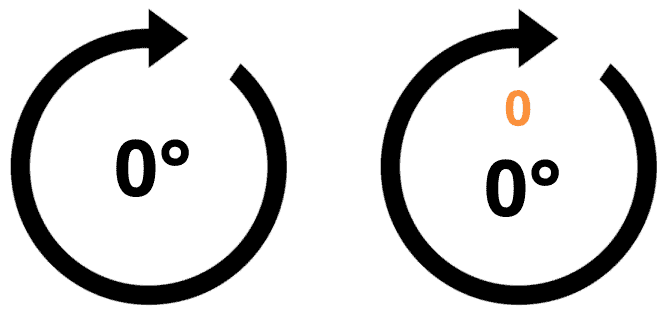Singleturn vs. Multiturn
For rotary encoders, the terms singleturn and multiturn are used. The difference between the two is that in a singleturn encoder, the output codes are repeated every revolution of the encoder shaft. There is no data to indicate whether the encoder has made one revolution or 1000 revolutions. For multiturn absolute encoders, the output is unique for each shaft position at each revolution up to a certain number of revolutions (e.g. 4096).
An example of a multiturn encoder application is linear position feedback by measuring the number of revolutions of a precision ball screw. A specific linear motion can be achieved with a specific number of revolutions. If the exact position of the system is required at power-up, the additional capability of counting the number of revolutions without mains power is required. This is useful when moving the system manually while the main power to the machine is off.
An example of a system that requires only a singleturn encoder is one whose movement is limited by hardware to less than one full turn. For example, the position of the front wheels (steering wheels) in a car can only be rotated ±30 degrees left and right. The encoder that measures the steering angle does not need to count more than 0 - 60 degrees of movement, so multiturn counters are irrelevant for such an application.
Another way to illustrate the difference between the two types is to think of the singleturn encoder as a clock with only a minute hand, and the multiturn encoder as a clock with a minute hand and an hour hand. Both have 60 positions within one revolution, but the multiturn encoder (clock with hour hand) can also count up to 12 full revolutions.
An additional feature of some multiturn encoders is the ability to count the number of full revolutions even when the encoder is not powered. To achieve this additional functionality, a multiturn encoder requires additional hardware to allow it to count the revolutions. This can be done in the following way:
- Battery-powered: A battery ensures that the count is maintained through power cycles. It uses a low-power electrical design to detect motion.
- Geared: A gear train mechanically stores the number of revolutions.
- Self-powered: These encoders use the principle of energy harvesting to extract energy from the moving shaft. Introduced in 2007, this principle uses a Wiegand sensor to generate enough current to power the encoder and write the number of revolutions to non-volatile memory.
Left: single-turn; right: multi-turn
Open encoder selector All products


